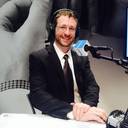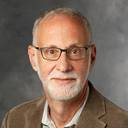Dr. Birnholz:
Coming to you from the ReachMD studios, this COVID-19: On the Frontlines. I’m Dr. Matt Birnholz. On this episode, we caught up with Dr. Mark Cullen from Stanford University School of Medicine. Dr. Cullen is the Scientific Committee Chair for the academic arm of Stanford’s COVID-19 research database, a secure repository of patient-level data that’s helping researchers extract key insights into COVID-19’s transmission patterns and therapeutic targets.
Here's Dr. Cullen now.
Dr. Cullen:
I’m stunned every day by some new observation and hoping soon to be able to make real sense of it. So, just to pick one example, very recently, um, the ability not just to test whether someone’s shedding virus, which is critical for contagion and for diagnosis, but whether or not someone has developed antibodies to virus has become available. Unfortunately, there are lots of different tests and they’re all not just as good. But this information is going, for the first time, to give us some idea as to many people have been affected. So I’m gonna say something that the audience should immediately discount in terms of its precision, but it – but it’ll give you an idea what I’m talking about. So it now appears that probably where I live, where we’ve done an incredibly good job, for whatever reasons, in controlling the spread, it looks like about 3% of the population, or thereabout, actually got sick at one time or another, maybe even quietly, I mean, without knowing that they were sick. And many of them probably no sicker than a flu-like illness that was never tested, and so forth. But it gives us a whole new sense of what’s going on at the population level. In New York, it appears probably 15% of New York, um, has had exposure to, and been infected by the virus at some point along the last couple of months. Those revelations are coming out literally every single day. So now we’re waiting with bated breath for the first glimmering of evidence that having those antibodies really is associated with immunity. We don’t know that fact. It may seem logical to many readers, “Oh, you got antibodies, you must be immune.” Not so fast! Um, we need to know whether having antibodies really is a shield guard protection for the individual, and for how long? It may turn out to be protection for three months, and not beyond. Or it may turn out to be lifetime immunity as we seem to get from a polio vaccine or a measles vaccine or having had any one of those infections. We don’t seem to ever get them again, so we think that people get lifelong immunity. In any event, I watch in awe every day, as my colleagues around the world contribute one or another little piece, and I find myself, like many of my peers around the country, try to put the pieces together, to formulate what will turn out to be both health policy, treatment policy, but also public policy.
Dr. Birnholz:
That was Dr. Mark Cullen from Stanford University School of Medicine. To access more episodes from COVID-19: On The Frontlines, and to add your perspectives toward the fight against this global pandemic, visit us at ReachMD.com and become Part of the Knowledge. Thank you for listening.



Facebook Comments